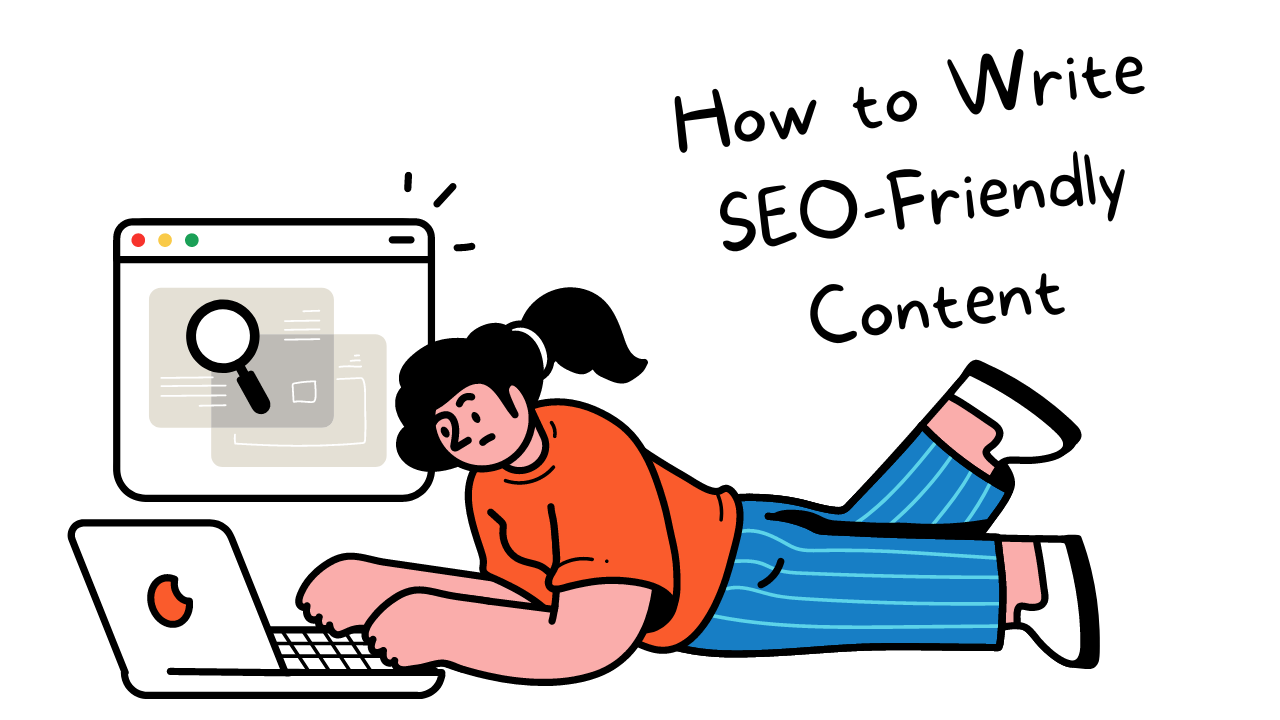Content Writer | Posted on | science-technology
How to write SEO friendly Contents?
| Posted on
To write SEO-friendly content, taking into account the accompanying tips is significant:
1. Watchword research: Recognize important catchphrases or expressions that your ideal interest group is probably going to look for. Use watchword research instruments to track down well-known and low-contest catchphrases.
2. Use watchwords decisively: Consolidate your picked catchphrases normally all through your substance, remembering for the title, headings, subheadings, and body text. Be that as it may, stay away from watchword stuffing, as it can adversely influence your web index rankings.
3. Compose excellent substance: Spotlight on making an important and enlightening substance that addresses the inquiries or takes care of the issues of your ideal interest group. Expect to give interesting and unique substance that stands apart from contenders.
4. Advance meta labels: Art convincing meta titles and portrayals that incorporate your objective watchwords. These labels show up in web search tool results and can essentially affect navigation rates.
5. Use header labels: Design your substance utilizing header labels (H1, H2, H3, and so forth) to assist with looking through motors to grasp the ordered progression and association of your substance. Integrate watchwords into these headings when suitable.
6. Improve pictures: Utilize elucidating document names and alt labels for your pictures, consolidating pertinent watchwords where suitable. This assists web search tools in figuring out the substance of the picture.
7. Interface inside: Incorporate inward connections inside your substance to direct clients to related pages on your site. This assists web crawlers with figuring out the design and significance of your substance.
8. Fabricate backlinks: Acquire excellent backlinks from legitimate sites to work on your site's power and permeability in web search tool rankings. This should be possible through visitor writing for a blog, making shareable substance, or contacting pertinent sites for joint effort valuable open doors.
9. Improve page load speed: Guarantee your site stacks rapidly by upgrading picture sizes, limiting code, and utilizing storing methods. A quicker site further develops client experience and can decidedly influence web search tool rankings.
10. Routinely update and revive content: Stay up with the latest by consistently evaluating and refreshing it. This shows web crawlers that your site is effectively kept up with and gives new, significant data to clients.
By following these tips, you can make Web optimization cordial substance that is bound to rank well in web crawler results and draw in natural rush hour gridlock to your site.

0
0 Comment
| Posted on
To write SEO-friendly content, follow these simple steps:
- Choose a target keyword: This is the main keyword or phrase that you want your content to rank for in search engine results pages (SERPs). For example, if you're writing a blog post about how to write SEO-friendly content, your target keyword might be "SEO-friendly content writing tips.
- Research your target keyword: Once you have a target keyword, you need to research it to understand how people are searching for it. This will help you write content that is relevant and informative to your target audience. You can use a keyword research tool like Google Keyword Planner to get insights into search volume, competition, and related keywords.
- Structure your content: Once you have a good understanding of your target keyword and what people are searching for, you can start to structure your content. This includes using headings and subheadings to break up your text and make it easy to read. You should also use your target keyword and related keywords throughout your content but avoid keyword stuffing.
- Write engaging content: SEO helps people find your website on the internet, but it's not the only important thing. You should also make sure the words you write are interesting and helpful for the people who visit your site. This means writing in a way that's easy to understand and not using complicated words. It's also a good idea to add pictures and videos to your writing to make it look nice and interesting. This way, more people will want to read what you have to say.
- Optimize your images and videos: When you add images and videos to your content, be sure to optimize them for SEO. This means giving them relevant filenames and alt-text descriptions. You should also compress your images to reduce their file size and improve your website's loading speed.
- Promote your content: Once you've published your content, be sure to promote it on social media and other websites. This will help you increase traffic to your website and improve your search engine rankings.

0
0 Comment
| Posted on
Writing SEO-friendly content requires a balance of quality, relevance, and optimization to ensure your material ranks well in search engines while providing value to your audience. Here’s a guide on how to create SEO-friendly content:
1. Start with Keyword Research
- Identify keywords that your target audience is searching for. Use tools like Google Keyword Planner, Ahrefs, or SEMrush to find relevant keywords with high search volume and low competition.
- Focus on long-tail keywords, which are specific and less competitive, making it easier for your content to rank.
- For instance, if you’re targeting the Dallas market, a keyword like "SEO consultant Dallas" will be more effective than just "SEO consultant."
2. Create High-Quality, Valuable Content
- Ensure your content answers user queries and provides valuable insights. Search engines prioritize user experience, so if your content is useful, engaging, and informative, it’s more likely to rank well.
- Write in-depth articles that cover topics comprehensively, keeping readers engaged and on the page longer.
- Avoid keyword stuffing. Instead, use your primary keyword naturally within the text, title, subheadings, and meta description.
3. Optimize Meta Tags
- Title Tags: Ensure your title is compelling, includes your primary keyword (e.g., "SEO Consultant Dallas"), and is within 60 characters.
- Meta Description: Write an engaging meta description (under 160 characters) that includes your primary keyword and encourages users to click on your page.
4. Use Headings and Subheadings
- Structure your content using headings (H1, H2, H3). This not only makes it easier for readers to scan but also helps search engines understand the hierarchy of your content.
- Use your target keyword in the H1 (main title) and sprinkle secondary keywords in H2 and H3 subheadings.
5. Optimize Images and Alt Text
- Include images to break up the text and make your content more engaging. Optimize the file names by using descriptive words that include your keyword.
- Use descriptive alt text for each image, incorporating your keywords when relevant. This helps improve accessibility and offers another opportunity for keyword use.
6. Internal and External Linking
- Use internal links to guide readers to other relevant pages on your site. This keeps visitors on your website longer and helps distribute link equity.
- Incorporate external links to authoritative sites to add value and credibility to your content. Ensure these links are relevant and enhance the user’s reading experience.
7. Improve Readability
- Write in simple, clear language to make the content easy to digest. Use short paragraphs, bullet points, and numbered lists (where appropriate) to improve readability.
- Utilize tools like Hemingway or Yoast to check the readability score, aiming for a 6th to 8th-grade reading level.
8. Use Mobile-Friendly Formatting
- Ensure your website is responsive and the content is optimized for mobile devices. More than half of all web traffic comes from mobile devices, and Google prioritizes mobile-friendly sites.
9. Monitor and Update Content
- SEO isn’t a one-time task. Monitor your content’s performance using tools like Google Analytics or Search Console.
- Regularly update older content with new information, keywords, or links to maintain its relevance and ranking.
0
0 Comment
| Posted on
Writing SEO-friendly content would, therefore be crucial in further improving the position or presence of your website and ultimately getting organic traffic. Given the strategies listed below, do your best to create material that will rank well.
- Conduct keyword research: Find the primary keywords and secondary keywords for the topic. Use tools such as Google Keyword Planner, Ahrefs, or SEMrush to identify search volume and low competition as regards keywords. Such would be injected into the article organically.
- Craft Catchy Titles and Meta Descriptions: The title must be attractive and should hold the main keyword. The meta description is a short summary statement, and it too must not forget the inclusion of the most prominent keyword. All these factors create a signal for the crawler about what your page communicates to its users, that too encouraging them to enter.
- Use Headings and Subheadings: Arrange your content with clear headings (H1, H2, H3) containing relevant keywords. It improves readability and will be easier for the search engines to understand the structure and main points of your content.
- Optimize for Readability: Use small paragraphs, bullet points, and images or infographics to split up the text. It will make your content look more appealing and easier to read. It will decrease the bounce rates and increase the chances of achieving better SEO.
- Include Internal and External Links: Link to other relevant pages on your website (internal links) and to authoritative external sources. This helps search engines understand the context of your content and can improve your site's credibility.
- Optimize Images and Media: Use descriptive file names and alt tags for images, incorporating relevant keywords. This helps search engines index your images and can improve your content's visibility in image search results.
- Mobile-Friendly: Of course, since more rely on mobile, your content should also be optimized for mobile viewing. Using responsive design makes sure that your content will look great on every screen.
- Quality and Relevance: The information from the content is complete with such quality that your target audience can appreciate. Help them find answers and solve their problems while the content remains relevant to your search intent.
- Use an SEO Company for Professional Advice: If you are a beginner in search engine optimization or you simply want to upgrade your strategy, you can hire an SEO company. They will provide you with professional advice along with more advanced tools, and customized strategies that improve your content's performance.
- Monitor and Update Your Content: Monitor the performance of your content using tools such as Google Analytics. Make updates to outdated information, add new insights, and refine your keywords to ensure your content stays relevant and competitive.
Using these strategies, you will be able to create SEO-friendly content that ranks well on the search engines but also appeals and informs your audience.
0
0 Comment
| Posted on
Crafting SEO-Friendly Content: A Guide
To come up with SEO content, an approach of combining technical optimization with good writing that is appealing should be taken. From these key elements you can improve your website among the search engines to a great extend.
Keyword Research: It is the key to writing SEO-friendly content and it all starts with keyword research. You must select appropriate keywords and phrases that your target audience will most likely use when searching for information. Utilize tools such as Google Keyword Planner or SEMrush to find popular terms and their search volume. Use these words naturally in your content, they should appear in the headings, subheadings and body text.
Quality & Relevance of Content: Nothing works better in attracting and keeping visitors glued to your site than high quality, engaging and informative content. Write well, write clearly and make sure that there are no grammatical mistakes. But above all, make sure that the content you present is useful for your audience. Write what they want to read not what you think they should read about. And ensure that you include the right keywords in your content.
Structure and Formatting: A content piece that is well-structured delights readers as it is easier to read and understand. Do write a title or subheading to break up your content into smaller sections. Create a clear priority, the most important information should be at the top of your text. Bullet points and numbered lists are also techniques that can aid readability.
Meta Tags: Meta tags serve search engines by providing information about the content of your website which is crucial. The meta title and meta description should be precise, descriptive, and contain primary, secondary as well as tertiary keywords/phrases. Meta title is what shows up in the search results so you should make it captivating and encourage clicks.
Internal and External Linking: Internally linking is the technique of connecting various pages within your website which helps in better navigations and also it aids search engines to make out your website structure. First, internally linking your pages can help improve their rankings in search results, as it helps search engine spiders to discover your content more easily. Linking to reputable sources improves credibility of your content.

In User Experience, a positive user experience is what SEO depends on. Leverage the following to improve your website loading time: use only mobile devices, and provide more navigable sites. Implement clear and reliable navigation menus as well as logical structure in presenting your content.
In the field of content promotion, you are required to put in more work once you have produced great content. This is possible by making use of social media, email marketing, and even other channels of broadcasting your content to a varied audience. Do this through encouraging social sharing and engagement for your content to get more visibility.
You can use SEO writing to organically reach more people with your blog and ultimately connect better with your audience.
0
0 Comment


